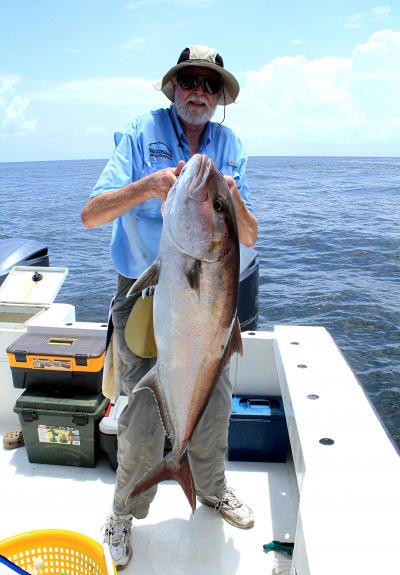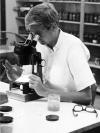Franks Nears Half-Century Mark in Marine and Fisheries research at GCRL
Wed, 05/02/2012 - 02:33pm | By: Martha Brown

Jim Franks first came to The University of Southern Mississippi's Gulf Coast Research Laboratory (GCRL) in the summer of 1963 to participate in an undergraduate marine ichthyology course. Some 50 years later, Franks has become one of the most recognized and recognizable scientists at GCRL. He puts a face to the name with his presence at local fishing tournaments and is always eager to lend a hand and an ear to the general public for all things marine.
Franks is the second GCRL scientist to be featured in a series of in-depth biographies of influential scientists from GCRL who are retiring or nearing retirement. Read the full piece here: http://www.usm.edu/gcrl/about_us/Jim.Franks.php. The series, “Pioneers in Marine and Fisheries Research at the Gulf Coast Research Laboratory” seeks to chronicle their professional careers documenting their accomplishments and focusing on some of the important issues they have encountered. Especially crucial was the desire to capture their thoughts and concerns over current issues in the marine and environmental sciences.
This series of profiles will be expanded during 2012. Tom McIlwain was the first honoree; his article can be viewed here: http://www.usm.edu/gcrl/about_us/Tom.McIlwain.php
As a fisheries biologist, Franks has for the past 35 years studied such offshore fishes as cobia, tuna, billfishes and sharks conducting ground-breaking research on Sargassum, an offshore essential habitat for many species of fish. Since the late 1990s, he and his colleagues at GCRL have been engaged in the research of large pelagic fishes in the Gulf of Mexico, considering the ecological and economical importance of such species as yellowfin tuna, wahoo, blue marlin, whale sharks and the iconic bluefin tuna.
GCRL has a long history of marine and fisheries research. Gordon Gunter, former lab director, was considered by many to be the father of fisheries science for the Gulf of Mexico. It was he who coined the term “Fertile Fisheries Crescent” to describe the highly productive region stretching from Mobile Bay to Sabine Pass on the Texas/Louisiana border, including the Mississippi Sound and surrounding waters.
The mission of the Gulf Coast Research Laboratory, Mississippi's marine laboratory, is scientific discovery related to coastal and marine resources, development of new marine technologies, and the education of future scientists and citizens. Learn more at www.usm.edu/gcrl
